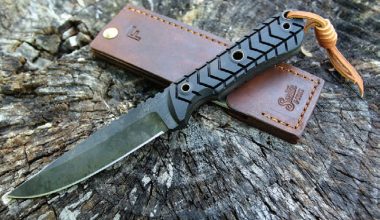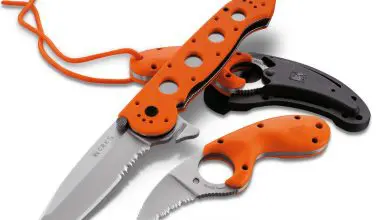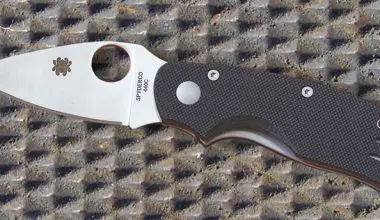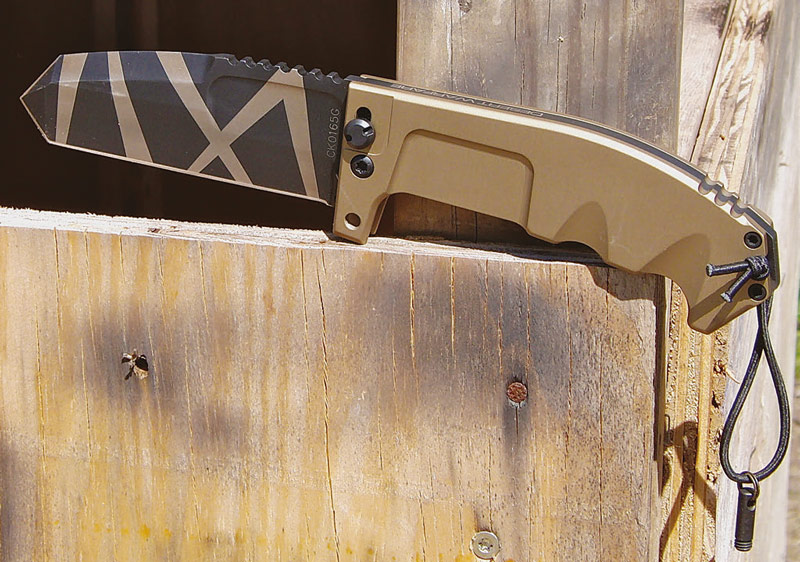
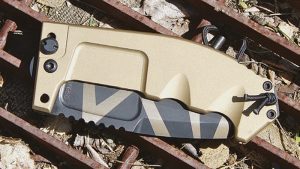
AS I’ve previously written, I like Extrema Ratio knives because they are well-made and well-designed for military and law enforcement users who need a tough knife.
I’ve been aware of the 185 RAO for some time but never really had any urge to test it. But recently, I’ve been getting material together to write a book on Air Force Ground Special Ops units around the world and have been reading about Italy’s 185th RAO (Ricognizione ed Acquisizione Obiettivi; Reconnaissance Target Acquisition) Regiment. Though part of the Italian Army’s Special Operations Forces, the 185th RAO performs the TACP (Tactical Air Control Party) mission carried out by Air Force units in many countries, in conjunction with the Italian Air Force’s 17th Stormo Incursori, along with other special ops missions.
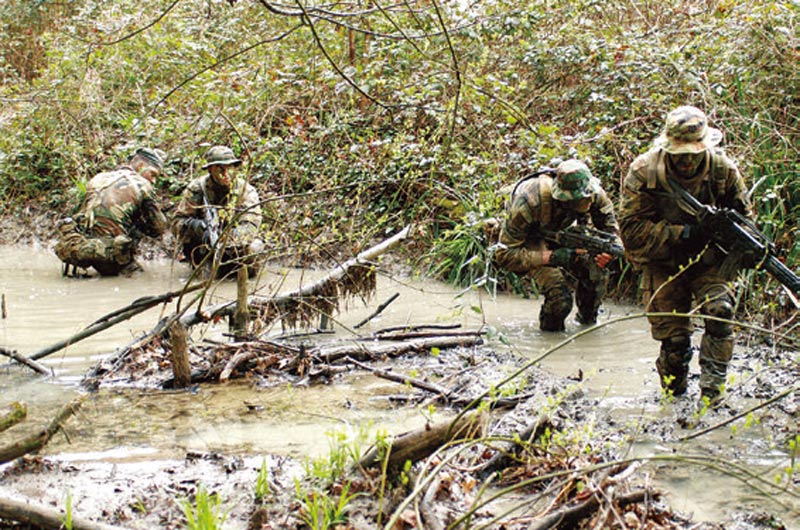
As I learned more about the 185th RAO, I naturally became interested in their knife—and it is quite interesting. What is especially clever about the RAO blade is that it is designed as a folder, which is relatively compact for use by a parachute qualified unit, yet it has the capability of being rapidly converted to a fixed-blade knife. You have to admit that’s pretty cool!
The RAO isn’t a close combat knife, though its heavy tanto point and cutting edge could do a lot of damage. It’s primarily a survival knife designed to hold up under hard usage. Why this design was chosen for the 185th RAO becomes clearer when their mission is understood.
Trained to designate targets for aircraft or artillery fire, the RAO has four “batteries,” each specializing in a different operating environment—desert, mountainous and Arctic, amphibious, and special recon and surveillance. Each of the batteries is broken into eight-man operational detachments. At least one man in each battery is freefall parachute trained.

“See without being seen” is the motto of the 185th RAO. Because operators of the 185th RAO are trained to infiltrate behind enemy lines and stay in place to perform their mission, they receive substantial survival and escape and evasion training. Use of the RAO knife is a part of this training.
Two aspects of the RAO allow it to perform as either a heavy-duty folder or fixed-blade knife.

First, there is an elastic wrist strap on which is carried a pin that may be pushed through a hole in the crossguard and screwed into place to lock the blade open, combining with the sturdy spring lock to secure the blade. This additional locking device was deemed necessary because the heavy RAO blade was intended for chopping.
Another clever feature is the sheath, which appears to be a standard folding knife sheath, but which also incorporates a second sheath and retention strap that may be used when the blade is locked open. Straps on the back of the sheath allow it to be attached easily to a vest using the MOLLE system. Also included in the sheath is a diamond sharpener.
The knife itself is big and tough. When folded, it is about 5.75 inches overall and 2.5 inches wide. The blade is a little over 4.5 inches and sharpened full length. With blade opened and locked in place, overall length is about ten inches. Thickness is just under .25 inches.
Atop the blade are ridges on which the thumb may be rested. On the blade is a serial number, which is useful if ordered by a military unit for issuance. Weight of the RAO is about 12 ounces. Blade steel is N690 (58 HRC) and handle material is Anticorodal, an alloy of aluminum, magnesium, copper, and manganese that has high corrosion resistance and takes anodizing well.
I have generally found Extrema Ratio knife handles very ergonomic and comfortable. This is true of the RAO, but I did find that it is necessary to place the ring and pinky fingers in the finger depressions for most comfortable use. The crossguard is well designed to keep the hand from slipping forward onto the blade.
I found when using the RAO as a fixed blade with the safety pin in place that it is necessary to decide how to place the hand in relation to the stretched elastic wrist lanyard. The hand may be slid under the elastic, which then presses against the hand and helps secure the grip, but also impedes shifting the grip slightly. The other method is to place the hand over the elastic and pull it against the grip. I found this way works best. The system of having the pin on the elastic thong was a little cumbersome, but if the pin were not affixed in some way, it would most likely get lost.
The 185 RAO is available in black and also in a highly durable “Desert Warrior” finish, which includes GEO camo on the black blade. I ordered my T&E knife with the Desert Warrior finish, and I have to admit it has a high CDI factor.
Whether with the standard black or Desert Warrior finish, like every other ER knife I’ve tested and owned, the RAO performs as advertised. I cut, chopped and pried with it, including some heavy chopping on tree limbs with the pin in place to convert the RAO to a fixed blade. It held up just dandy.
The same things that make the 185 RAO a good military survival knife make it a good outdoorsman’s knife. I recommend it for either usage.
